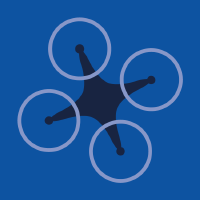Topic Editors



Target Tracking, Guidance, and Navigation for Autonomous Systems, 2nd Edition
Topic Information
Dear Colleagues,
Growing civilian and military demand for autonomous systems, including unmanned vehicles, has promoted the development of modern target tracking, guidance, and navigation technologies. Target information is vital for autonomous systems to interact with their surrounding environments, enabling them to complete their missions. However, the motion of the system itself affects the quality of target information, which implies that the target-tracking problem is inseparable from the guidance and navigation of autonomous systems. Modern technologies such as model-/data-driven estimation, heterogeneous data fusion, optimization, and artificial intelligence can improve target-tracking systems and, subsequently, change the overall performance of guidance and navigation. This Special Issue aims to identify recent theoretical and technical advances in target tracking, guidance, and navigation, which provide autonomous systems with a high degree of autonomy. Related topics include, but are not limited to:
- Tracking maneuvering targets in cluttered/jammed environments;
- Joint target tracking and classification using heterogenous sensors;
- Centralized/distributed multi-sensor fusion;
- Optimal sensor arrangement;
- Guidance, navigation, and control of autonomous vehicles;
- Integrated target tracking and guidance;
- Dynamic model-based navigation;
- Swarm localization;
- Dynamic object tracking using SLAM (simultaneous localization and mapping);
- Applied artificial intelligence in target tracking, guidance, and navigation.
Prof. Dr. Won-Sang Ra
Prof. Dr. Shaoming He
Dr. Ivan Masmitja
Topic Editors
Keywords
- target tracking
- target classification
- heterogeneous sensor fusion
- sensor arrangement
- autonomous navigation
- autonomous vehicle guidance
- swarm localization
- applied artificial intelligence
Participating Journals
| Journal Name | Impact Factor | CiteScore | Launched Year | First Decision (median) | APC | |
|---|---|---|---|---|---|---|

Aerospace
|
2.1 | 3.4 | 2014 | 21.3 Days | CHF 2400 | Submit |

Automation
|
- | 2.9 | 2020 | 24.1 Days | CHF 1000 | Submit |

Drones
|
4.4 | 5.6 | 2017 | 19.2 Days | CHF 2600 | Submit |

Remote Sensing
|
4.2 | 8.3 | 2009 | 23.9 Days | CHF 2700 | Submit |

Sensors
|
3.4 | 7.3 | 2001 | 18.6 Days | CHF 2600 | Submit |

MDPI Topics is cooperating with Preprints.org and has built a direct connection between MDPI journals and Preprints.org. Authors are encouraged to enjoy the benefits by posting a preprint at Preprints.org prior to publication:
- Immediately share your ideas ahead of publication and establish your research priority;
- Protect your idea from being stolen with this time-stamped preprint article;
- Enhance the exposure and impact of your research;
- Receive feedback from your peers in advance;
- Have it indexed in Web of Science (Preprint Citation Index), Google Scholar, Crossref, SHARE, PrePubMed, Scilit and Europe PMC.

